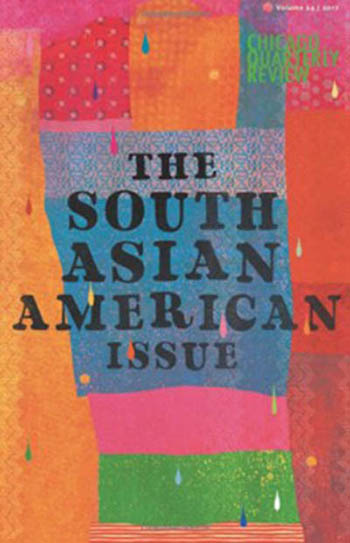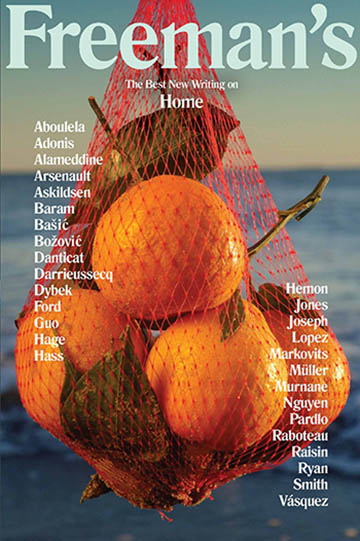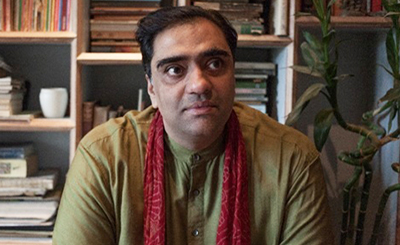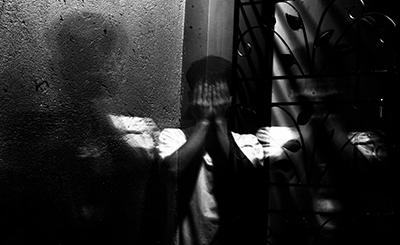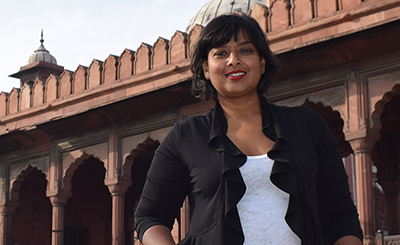
Two literary journals, in their recent issues, put together interesting perspectives on home and belonging
Home. Homestead. Homemade. Homegrown. Homeland. Homesick. At home. To home in on —clearly, the concept of home invades much of our thinking, and so, too, our language. Home signifies interior; to be away from it, exterior. To be without a home: homeless; to be forced out of one’s home: displaced. Home and its linguistic relatives imply unity and kinship, but its opposites scatter into unrelated forms, just as those without homeland must scatter to places unrelated to their pasts — foreign, outside, away.
For a concept that’s so integral to our thinking, how is it we’re so bad at providing its real counterpart to people? At recognizing its lack, and the effects of that absence?
Two recently released issues of the literary journals Chicago Quarterly Review and Freeman’s contain in their 700 combined pages many lifetimes worth of perspective on home and belonging.
The range of writing here is such that many readers will find themselves stopping for breath between entries. The talent and beauty is, at times, overwhelming, as is the cruelty and suffering conveyed.
*
In 1994, Syed Afzal Haider and his writing group decided to start an independent literary journal “specializing in unconventional and experimental writing,” Elizabeth McKenzie, author of The Portable Veblen, wrote to me. “And the Chicago Quarterly Review was born.” In February, the CQR published a special issue focused on South Asian American writing.
McKenzie is now one of the CQR’s senior editors, alongside Haider; for this special issue, they enlisted Moazzam Sheikh as guest editor. Past special issues have focused on postwar writing from Japan and Okinawa; Chicago writers (this issue was named a Best Special Issue of the year by Best American Essay); and Italian writers in translation.
McKenzie wrote that the South Asian American issue “felt necessary only in that the CQR is interested in pursuing literary collections with special themes,” but that “many of the subjects that emerge in these writings are very much on our minds now.”
She’s right: Many of us are concerned with the crises magnified by the Trump Administration — immigration, racism, nationalism, nativism, sexism — and this special issue deals with the many living forms these –isms take.
Sheikh, the issue’s guest editor, was born in Lahore, Pakistan, but came to the U.S. in 1985. He studied business, film, and library sciences in America, and is now a librarian, teacher, and translator based in San Francisco.
Haider and Sheikh knew each other for many years before collaborating on this issue. Though the South Asian American issue of the CQR is compiled from writers working in English, Sheikh says he hopes to do another issue dedicated to South Asian languages.
On choosing which work to include, Sheikh said that if he could “go for the political without sacrificing quality and nuance,” he went for it. Only a few of the pieces in the issue feel apolitical. The great majority deal in hardship.
Maya Khosla’s poems show the delicacy of life in a war zone by contrasting pictures of fragility and softness with blinks of violence:
“Candlelight skids up a child who sleep-walks
with eyes wide. Outside, airwaves lower than sound
or shudder are rattling cups, smashing windows
within a miles-wide circumference. In her dream,
trees clinging to their blood-apricots swell
with the darkness of curfew nights. Touch one
and it explodes.”
From “Afghanistan, End of Eighty-Seven”.
The authors and artists in this issue grapple with many things. For Nadia Chaney, it’s the creation of self, the ownership of voice and name, and the comfort that she doesn’t have to be the first one to do these things, to discover how to belong; others have gone before. Soniah Kamal, in her story, “Jelly Beans,” which explores the changing familial roles when children marry outside their culture, shows that love and devotion are carried out in small actions and are grown over time, and that they can be found with people ostensibly unlike ourselves. Amit Majmudar analyzes “Five Famous Asian War Photographs,” with an eye for why those subjects caught Americans’ attention. Of “That nameless Afghan girl on the cover of National Geographic,” he writes: “Her eyes are green because they had to be green for the photograph to mean anything to us.” Majmudar’s words are cutting, but with that “us” he incriminates himself in this as well, and the problem becomes cultural, liberating the individual reader. He is urging us to witness our own weakness so that we might learn to see
differently.
Much of the writing questions belonging. For the women included, this belonging often extends even to their bodies. In Swati Khurana’s arresting piece, “My Grandmother Spoke to Tigers,” the narrator wrestles with herself, her ability to love the man she’s promised to marry, her first gynecological appointments, the reality of her flesh — but these listed topics don’t do Khurana’s writing justice. She causes imagery to appear before her readers’ eyes, layer by layer:
“See that girlchild, breathless, gasping for air, skin around her knees stretching, elongating her to girlwomanchild, a rolling pin flattens her feet, widens her hips, curves her spine, toppling her body”.
In “#Aylan, or How to Treat Refugees,” Madhushree Ghosh contemplates another body — that of the little Syrian boy, Alan, whose death captivated the internet. Not only was the little boy misnamed by the media, Ghosh notes, but he was reified for the “migrant crisis” — made its representative. “The humans,” writes Ghosh, “are dehumanized when labeled as a crisis” (196). Ghosh, too, is a child of refugees. Her parents’ stories detailed the religious partition of India after Britain’s exit in 1947. Then, Ghosh writes, “refugees in Pakistan and India escaped religious persecution,” but some refused to leave, “saying this was their homeland. Decisions of love for one’s motherland haunt later generations. But when refugees flee to different countries, they still carry their decisions with them…Life was always better in the country they left behind”.
Writing can be healing work, a space to spread one’s life out and see it clearly. “poetry is my most affordable therapist,” says the speaker in Shivani Narang’s intensely personal poem, “Untitled”. She goes on:
“i am too white in india, too brown in this country,
too queer for brown, too brown for queer,
too soft to be powerful, too powerful to be soft,
i am tired of this white man’s myth that i am model for a minority
that i am capable for a person of color”
from “Untitled”.
The poem’s lack of capitalization, of a title, make it an intimate confession of frustration, but also signal a kind of ownership. She does not fit what others need or expect her to, her hair short, her voice loud, but by the end of the poem she has figured out enough that next time, she’s going to “try to write a poem for myself, finally.” Art, she implies, has to be for oneself first.
Tara Dorabji’s speaker in “The Other Side” has written the poem “on being brown in America” “a hundred times”. Dorabji’s second poem in CQR is a letter to the titular “Other Mothers” in the speaker’s life. “My children are born from blood, unborn, and born from another. Two are blood. One I raised and two more I claimed. There are those unborn. And there is still another,” she says, laying out the complexity of her role. But further in the poem, her body becomes the homeland, the cold, awed universe. One other mother is “a quiet fire”. But the speaker is “a fire keeper” and “volcanic”. “I explode,” she says. “I erupt. I am the star and the sun.”
*
Freeman’s, a newer literary journal conceived of and edited by literary critic and poet, John Freeman, came out with its third issue, Home, in early April.
Freeman told me last summer, in an interview for Necessary Fiction, that “The obstacles that are faced in life by writers of color and by women are so big they require massive movements of social change.” But, he said, “we can do a lot of good with very little effort as editors and writers, just by asking questions. If you have a friend who lives somewhere else, ask, ‘Who should I be reading?’”
The inaugural theme for Freeman’s was “arrival,” and its second issue was formed around “family.” Freeman’s: Home addresses the many homes its writers have found, or left, or made.
Each issue of Freeman’s starts off with six or seven “shorts”. In hers, Kay Ryan writes about how we “ideally” feel at home: “We feel released not to pay any attention to where we are because we are suspended and weightless in a beautiful web made out of the sweet intersections of the familiar and thoroughly prevetted”.
Page
Donate Now
More from The Byword
Comments
*Comments will be moderated




